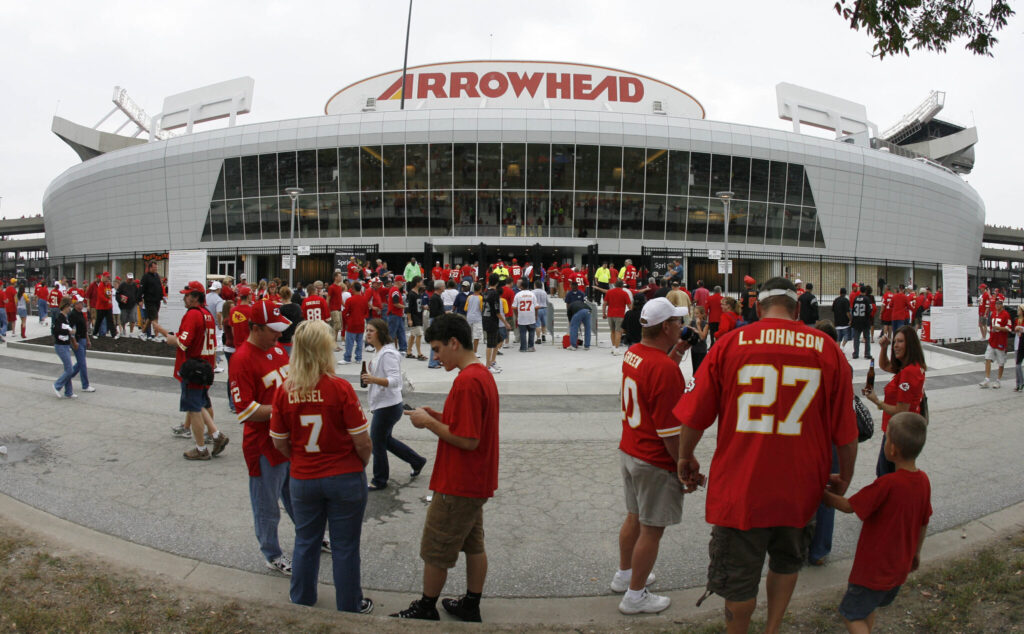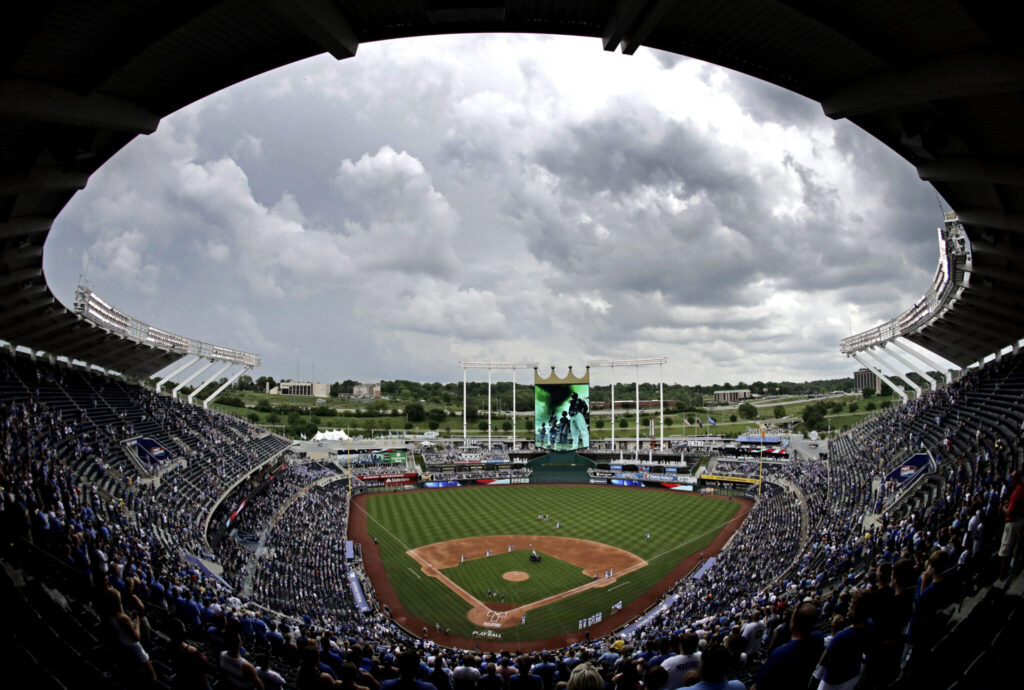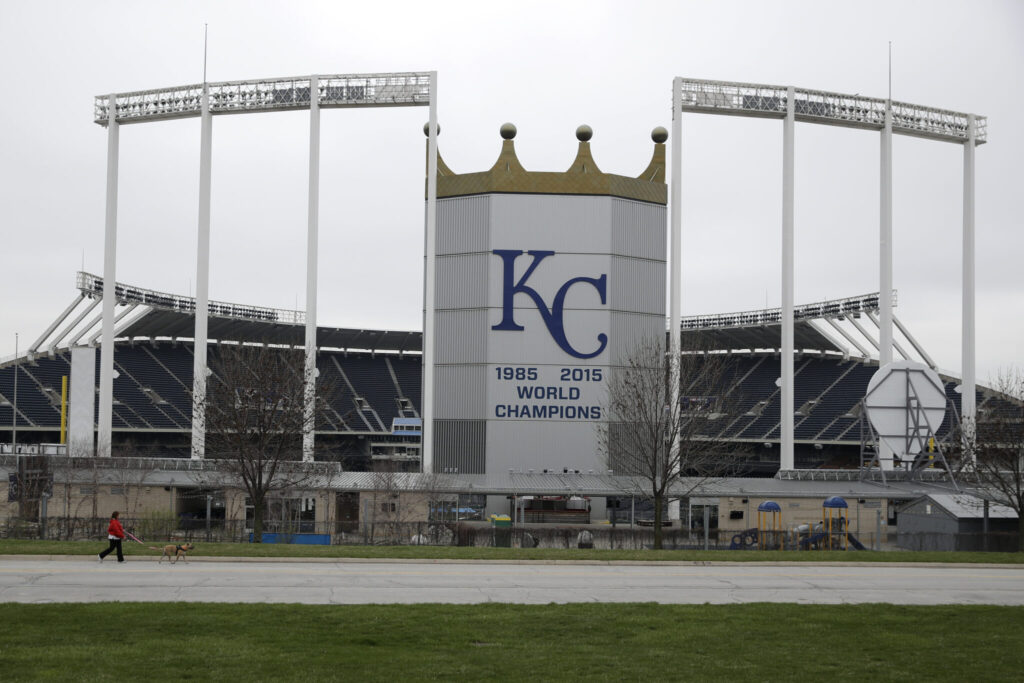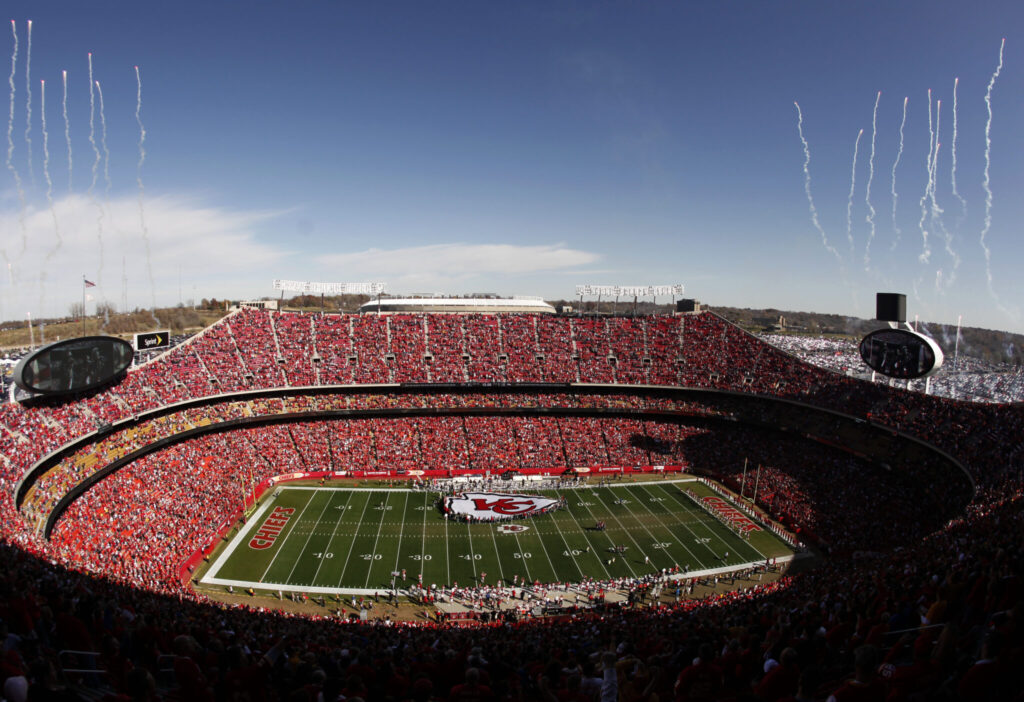Like a loss in the playoffs, voter rejection of a stadium tax plan will force the Kansas City Royals and Chiefs to reevaluate their approach. The defeat of a three-eighths cent sales tax to fund a new downtown Royals ballpark and renovate the Chiefs’ Arrowhead Stadium was almost assuredly not the end of the matter. Other teams and cities have faced similar setbacks, and that hasn’t slowed a wave of stadium construction underway across the U.S.
Quick Read
- Referendum Rejection: The Kansas City Royals and Chiefs face a setback as voters reject a tax plan to fund a new downtown Royals ballpark and renovate Arrowhead Stadium, a decision that prompts the need for a new strategy.
- Potential Threats: The possibility of team relocation looms, a common tactic in stadium funding battles, though it doesn’t necessarily imply imminent moves.
- Alternative Approaches: Teams can explore other funding options, such as modifying plans and seeking direct approval from legislative bodies, building without public funds, or attempting another public vote.
- Historical Context: Since 1990, voters have faced 57 stadium proposals, with 35 approvals and 22 rejections. Recent years have seen both approvals, like Oklahoma City’s arena for the Thunder, and rejections, like Tempe’s plan for the Coyotes.
- Legislative Routes: Some teams secure public subsidies without referendums, as seen with the Tennessee Titans’ new stadium and the Buffalo Bills’ stadium project.
- Voter Workarounds: After electoral defeats, teams often secure financing through legislative means or other non-referendum methods, such as the cases of the Pittsburgh Pirates and Steelers, Seattle Mariners, and Milwaukee Brewers.
- Persistence Pays: Teams like the San Francisco Giants have successfully won voter support after initial rejections by revising their stadium proposals.
- Relocation Risks: The threat of relocation has materialized in the past, with teams like the Oakland A’s, San Diego Chargers, and Charlotte Hornets moving after failing to secure voter-approved stadium funding.
- Future Implications: The Royals and Chiefs will need to navigate these complex dynamics as they plan their next steps, balancing the desire for new facilities with the challenges of securing funding in a voter-sensitive environment.
The Associated Press has the story:
When voters say ‘no’ to new stadiums, what do professional sports teams do next?
Newslooks- JEFFERSON CITY, Mo. (AP) —
Like a loss in the playoffs, voter rejection of a stadium tax plan will force the Kansas City Royals and Chiefs to reevaluate their approach. The defeat of a three-eighths cent sales tax to fund a new downtown Royals ballpark and renovate the Chiefs’ Arrowhead Stadium was almost assuredly not the end of the matter. Other teams and cities have faced similar setbacks, and that hasn’t slowed a wave of stadium construction underway across the U.S.
“The next page in the playbook, if they lose this referendum, would be to threaten to move,” said Brad Humphreys, an economics professor at West Virginia University, who researches sports stadiums.
But that doesn’t mean relocation is imminent, or even likely.

Moving to a new stadium within the same region or another state is just one of several options. Teams could tweak their plans and ask voters again. They could build or renovate stadiums without public funds. Or they could avoid a referendum by seeking approval for public subsidies directly from a legislative body such as a city council, county commission or state legislature.
“Usually, team owners just find a new way to get money, and they’ll go the legislative route,” said Geoffrey Propheter, an associate public finance professor at the University of Colorado Denver. “Rarely do team owners just straight up leave.”
DECADES OF DECISIONS
From 1990 through 2023, voters cast ballots on 57 stadium and arena proposals across the country, approving 35 and rejecting 22, according to data compiled by Propheter.
In December, Oklahoma City voters overwhelmingly approved a 1% sales tax for six years to help fund a new downtown arena for the NBA’s Thunder that is expected to cost at least $900 million.

But last May, voters in the Phoenix suburb of Tempe rejected a proposal for a $2.3 billion entertainment district that would have included a new arena for the NHL’s Arizona Coyotes. The defeat marked the latest seatback for the hockey team, which underwent a 2009 bankruptcy and is currently playing in a 5,000-seat arena shared with Arizona State University.
The Coyotes haven’t given up on the Phoenix area yet. The team is looking into bidding on a 95-acre tract in north Phoenix.
NO REFERENDUM NEEDED
Public subsidies for stadiums and arenas often get approved by elected officials without going on the ballot.
Last year, the Nashville City Council approved $760 million in local bonds to go along with $500 million in state bonds — all to help finance a new $2.1 billion football stadium for the Tennessee Titans. There was no public referendum.
Construction also began last year on a new football stadium for the Buffalo Bills that’s projected to cost more than $1.6 billion. A total of $850 million is coming from New York and Erie County, with no public referendum.

The proposal from the Royals and Chiefs went to voters because the Missouri Constitution requires a public vote on local taxes. Only voters in Jackson County got a say, because the proposed tax applied only to sales in that county.
Voter approval might not be necessary if the teams can finance their stadiums without a tax. One option is privately financed bonds, but those would still need a funding stream for repayments, said Brent Never, associate public affairs professor at the University of Missouri-Kansas City.
MAKING AN END RUN
After losing elections, some teams subsequently sidestep voters to get new stadiums.
In 1997, voters in 11 southwestern Pennsylvania counties rejected a proposed half-cent sales tax to replace a stadium shared by the MLB’s Pirates and NFL’s Steelers with two separate facilities and to fund a convention center expansion. But the next year, a regional development district approved public financing for the new facilities without going back to voters.
Similar scenarios played out elsewhere in the mid-1990s. When voters in King County, Washington, rejected a tax plan for a Seattle Mariners ballpark, owners threatened to put the team up for sale. Within a month, state lawmakers authorized a new financing plan for a new baseball stadium.

After Wisconsin voters rejected a sports lottery for a new Milwaukee Brewers ballpark, the state legislature authorized a regional sales tax to help pay for it. Last year, Wisconsin’s governor signed a law authorizing an additional $500 million of public aid for stadium renovations, again without a voter referendum.
TRYING AGAIN
Teams sometimes bounce back from a stadium election loss to achieve victory with voters.
After Houston voters defeated a new downtown arena for the NBA’s Rockets in 1999, supporters tried again the next year and easily won.
The San Francisco Giants are perhaps the greatest example of electoral persistence.
Voters said “no” to new stadium plans twice in San Francisco, once in Santa Clara County and once in San Jose, before the Giants put forth a privately financed stadium that finally received voter approval for a needed San Francisco zoning change in 1996.
MOVING OUT
The Oakland A’s received MLB approval last year to relocate to Las Vegas, following the path of the NFL’s Oakland Raiders who were similarly lured by a new publicly subsidized stadium. But those deals didn’t involve public votes.
The NFL’s Chargers are the most recent team to move following voter rejection of a stadium referendum. San Diego voters in 2016 defeated a plan to raise hotel taxes for a new football stadium and to expand a convention center. The Chargers then moved to a new privately financed stadium in Los Angeles, sharing it with the Rams, who relocated from St. Louis.
The NBA’s Charlotte Hornets moved to New Orleans in 2002 — later rebranding as the Pelicans — after voters defeated a sweeping plan to fund a new basketball arena, minor league baseball stadium, museums and cultural centers.
But just six months after the team left, the Charlotte City Council approved a plan for a new downtown arena without submitting it to voters. The NBA then awarded Charlotte an expansion team, which later assumed the Hornets name.






